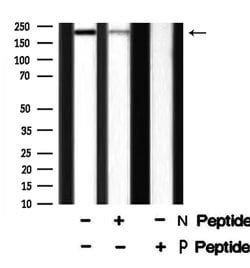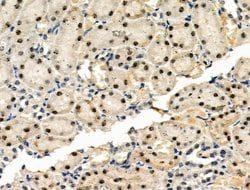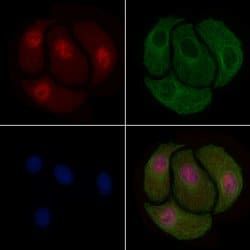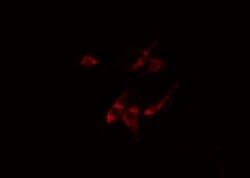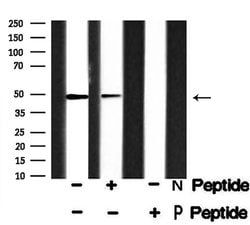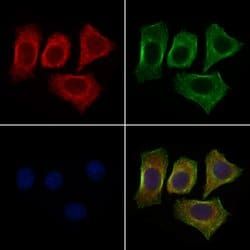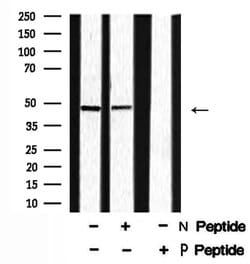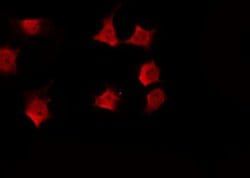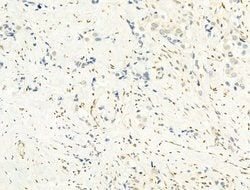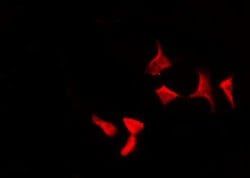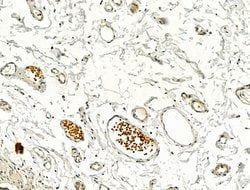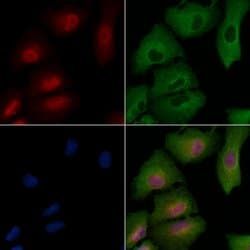Phospho-Ataxin 1 (Ser775) Polyclonal Antibody, Invitrogen™
Manufacturer: Thermo Scientific
Select a Size
| Pack Size | SKU | Availability | Price |
|---|---|---|---|
| Each of 1 | PIPA5118560-Each-of-1 | In Stock | ₹ 43,209.50 |
PIPA5118560 - Each of 1
In Stock
Quantity
1
Base Price: ₹ 43,209.50
GST (18%): ₹ 7,777.71
Total Price: ₹ 50,987.21
Antigen
Phospho-Ataxin 1 (Ser775)
Classification
Polyclonal
Conjugate
Unconjugated
Gene
ATXN1
Gene Alias
2900016G23Rik; alternative ataxin1; ataxin 1; Ataxin1; ataxin-1; Atx1; Atx-1; Atx-1-PB; Atxn1; C85907; CG4547; CG4547-PB; D6S504E; dAtx-1; Dmel\CG4547; Dmel_CG4547; ENSMUSG00000074917; Gm10786; OTTHUMP00000016065; SCA1; spinocerebellar ataxia 1; spinocerebellar ataxia 1 homolog; spinocerebellar ataxia type 1 protein; Spinocerebellar ataxia type 1 protein homolog
Host Species
Rabbit
Purification Method
sequential chromatography
Regulatory Status
RUO
Gene ID (Entrez)
20238, 25049, 6310
Content And Storage
-20°C
Form
Liquid
Applications
Immunocytochemistry, Immunohistochemistry (Paraffin), Western Blot
Concentration
1 mg/mL
Formulation
PBS with 50% glycerol and 0.02% sodium azide; pH 7.4
Gene Accession No.
P54253, P54254, Q63540
Gene Symbols
ATXN1
Immunogen
A synthesized peptide derived from human ATXN1(Accession P54253), corresponding to amino acid residues around phosphorylated Ser775.
Quantity
100 μL
Primary or Secondary
Primary
Target Species
Human, Mouse, Rat
Product Type
Antibody
Isotype
IgG
Description
- Antibody detects endogenous levels of Ataxin 1 only when phosphorylated at Serine 775
- The autosomal dominant cerebellar ataxias (ADCA) are a heterogeneous group of neurodegenerative disorders characterized by progressive degeneration of the cerebellum, brain stem and spinal cord
- Clinically, ADCA has been divided into three groups: ADCA types I-III
- ADCAI is genetically heterogeneous, with five genetic loci, designated spinocerebellar ataxia (SCA) 1, 2, 3, 4 and 6, being assigned to five different chromosomes
- ADCAII, which always presents with retinal degeneration (SCA7), and ADCAIII often referred to as the `pure' cerebellar syndrome (SCA5), are most likely homogeneous disorders
- Several SCA genes have been cloned and shown to contain CAG repeats in their coding regions
- ADCA is caused by the expansion of the CAG repeats, producing an elongated polyglutamine tract in the corresponding protein
- The expanded repeats are variable in size and unstable, usually increasing in size when transmitted to successive generations
- The function of the ataxins is not known
- This locus has been mapped to chromosome 6, and it has been determined that the diseased allele contains 41-81 CAG repeats, compared to 6-39 in the normal allele, and is associated with spinocerebellar ataxia type 1 (SCA1)
- At least two transcript variants encoding the same protein have been found for this gene.
